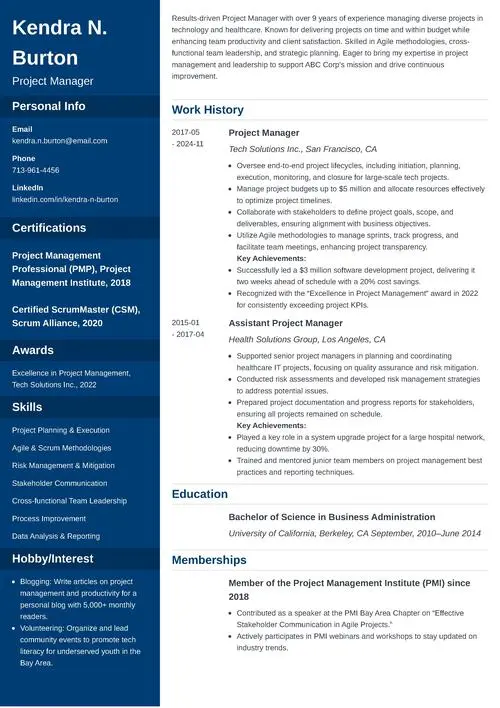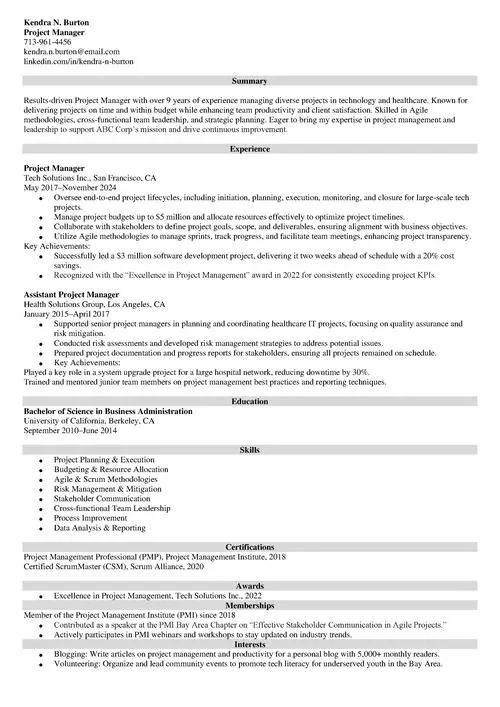If you've ever seen the words CV and resume and thought, “Aren’t those the same thing?”—you’re definitely not the only one. They both list your qualifications and help you get a job. So… what’s the big deal?
Here’s the thing: while they look similar, a CV and a resume are used for different situations, and they follow different rules. One is short and focused, the other is long and detailed. Knowing which one to use (and when) can make a big difference in your job search.
In this article, we’ll break it all down. Let's dive in!
Want to save time and have your resume ready in 5 minutes? Try our resume builder. It’s fast and easy to use. Plus, you’ll get ready-made content to add with one click. See 20+ resume templates and create your resume here.
Sample resume made with our builder—See more resume examples here.
Resume vs CV: 3 Key Differences
If you're applying for a job in North America, there are a few crucial differences between resumes and CVs that are important to note:
- Content: A CV is an in-depth view of your academic and professional experience. A resume is a brief snapshot of your most relevant qualifications for the target job.
- Length: Because of its content, a CV can run several pages long. Most resumes are one-page and only cover two pages if you have more than 10 years of experience.
- Purpose: Resumes are the standard document to apply for jobs. A CV is strictly for academic, research, and medical positions.

What Is a CV?
A CV, short for curriculum vitae, describes your entire career. It's the standard document to apply for jobs in Europe, Africa, Asia, and the Middle East. Conversely, in the U.S. and Canada, it’s typically used for academic, research, and medical roles.
When writing your CV for a North American job, employers expect you to detail all your academic background, work experience, skills, and other credentials. Including:
- Panels and conferences
- Publications
- Awards and honors
- Volunteer experience
- Certifications
- Professional memberships
- Grants and fellowships
- Languages
- Research or teaching experience
CV sample
This is how your CV should look:

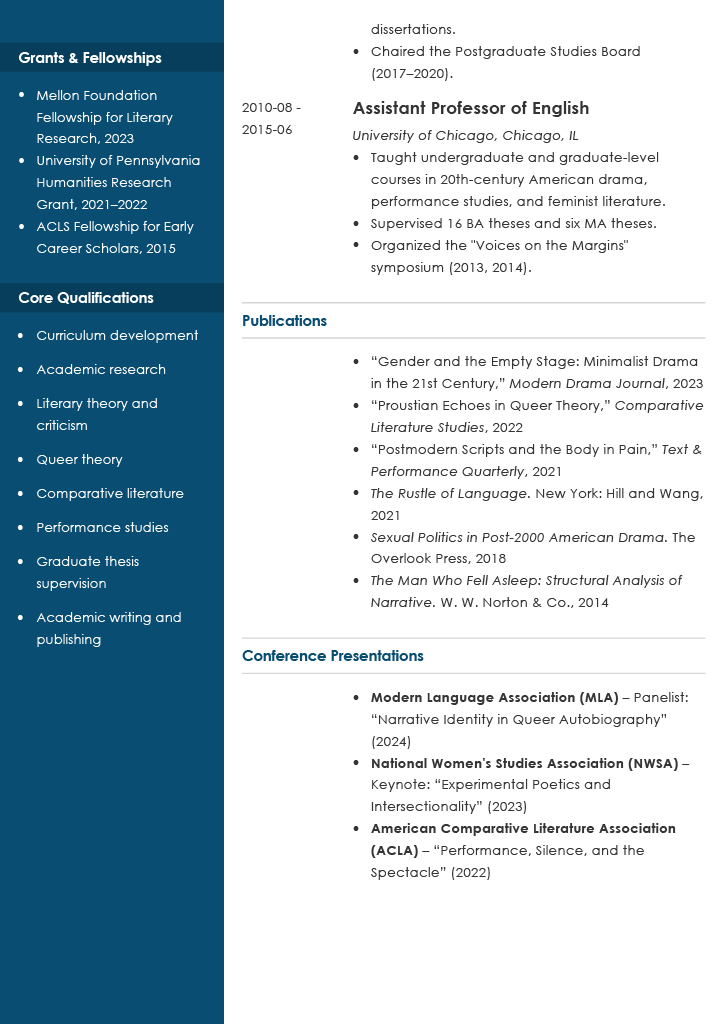
What Is a Resume?
A resume is a tailored overview of your most relevant skills and work experience. Most employers in North America require a resume to apply for a job at their company.
To create an effective resume, read the job description and see which of your credentials align with what the employer is looking for. Your resume should include the following:
- Resume summary or objective
- Work experience
- Skills
- Educational background
You can add other sections, like certifications or publications, if they're relevant to the job and don't take up too much space.
Resume example
This is how your finished resume should look:
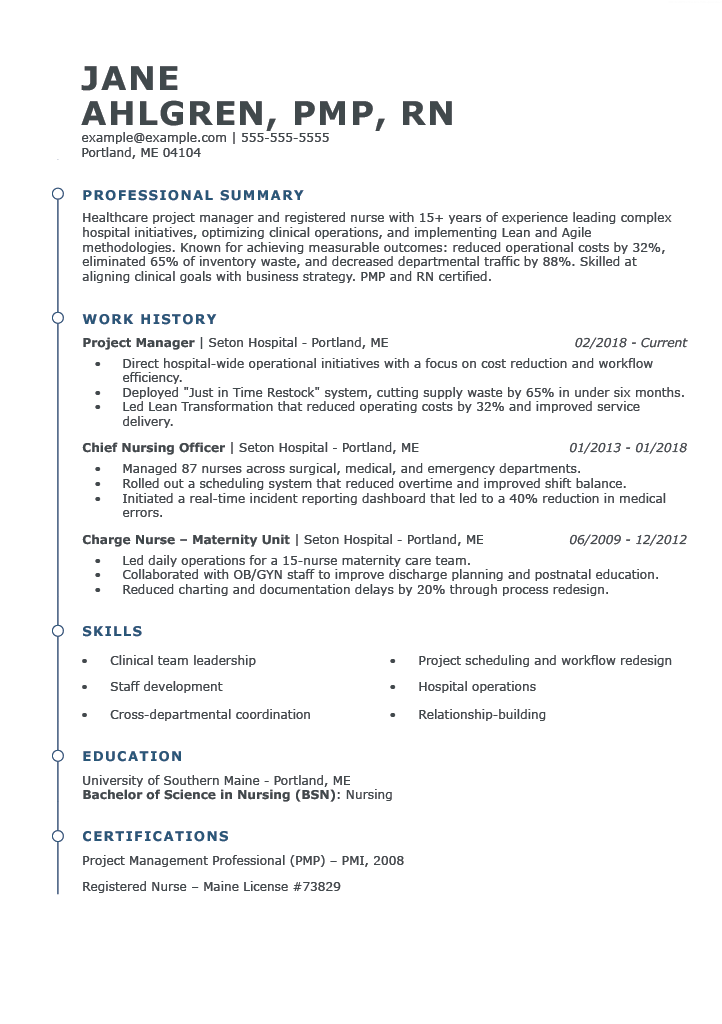
Curriculum Vitae vs Resume: International Differences
The resume/CV differences are mainly for U.S. job seekers. In other countries, the term "resume" doesn't exist or is used as a synonym for CV.
Let's look at resume and CV meanings around the globe:
- Europe and New Zealand: CV is a synonym for a U.S. resume. In short, it's a targeted document that you use to apply for jobs. "Resume" as a term is not used.
- Australia and South Africa: "CV" and "resume" are used interchangeably. Both words stand for a brief, one- or two-page document.
- South Asia: While a CV and a resume mean the same things as in the U.S., employers often require an additional document called "biodata". The biodata document includes personal information such as date of birth, gender, race, ethnicity, marital status, and salary.
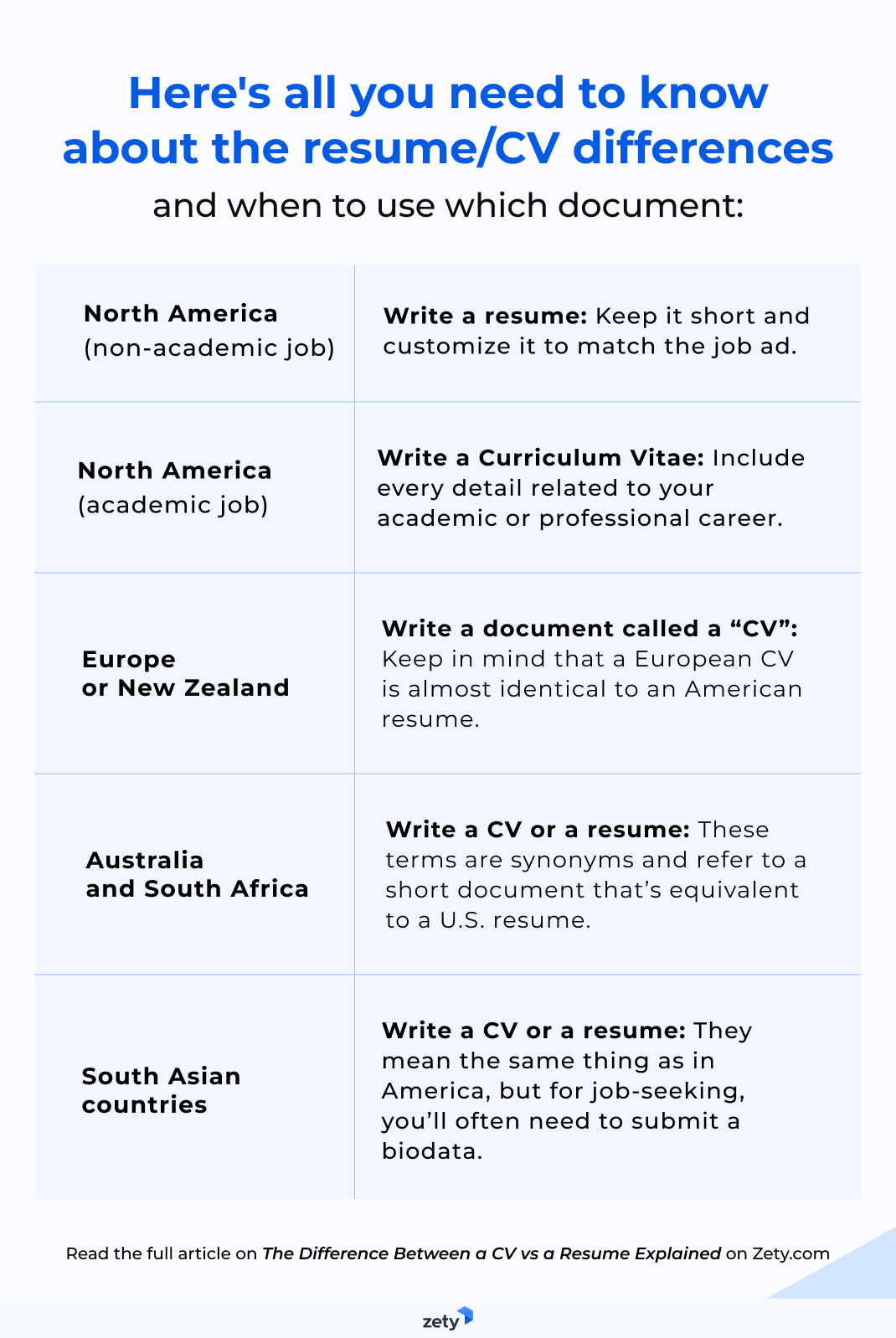
Key Takeaways
Before you start writing your resume or CV, let's review these key points:
- CVs and resumes differ in content, length, and purpose.
- For job seekers in North America, CVs should include your entire work experience, academic credentials, and skills.
- CVs in the U.S. and Canada are typically used for jobs in academia, research, and medicine.
- A resume only includes qualifications relevant to the target job. It shouldn't be longer than two pages.
- Resumes are the standard document for most jobs in North America.
- Europe and New Zealand use the term CV to refer to a document similar to a U.S. resume.
- Australia and South Africa use CV and resume interchangeably.
About Zety’s Editorial Process
This article has been reviewed by our editorial team to make sure it follows Zety's editorial guidelines. We’re committed to sharing our expertise and giving you trustworthy career advice tailored to your needs. High-quality content is what brings over 40 million readers to our site every year. But we don't stop there. Our team conducts original research to understand the job market better, and we pride ourselves on being quoted by top universities and prime media outlets from around the world.
